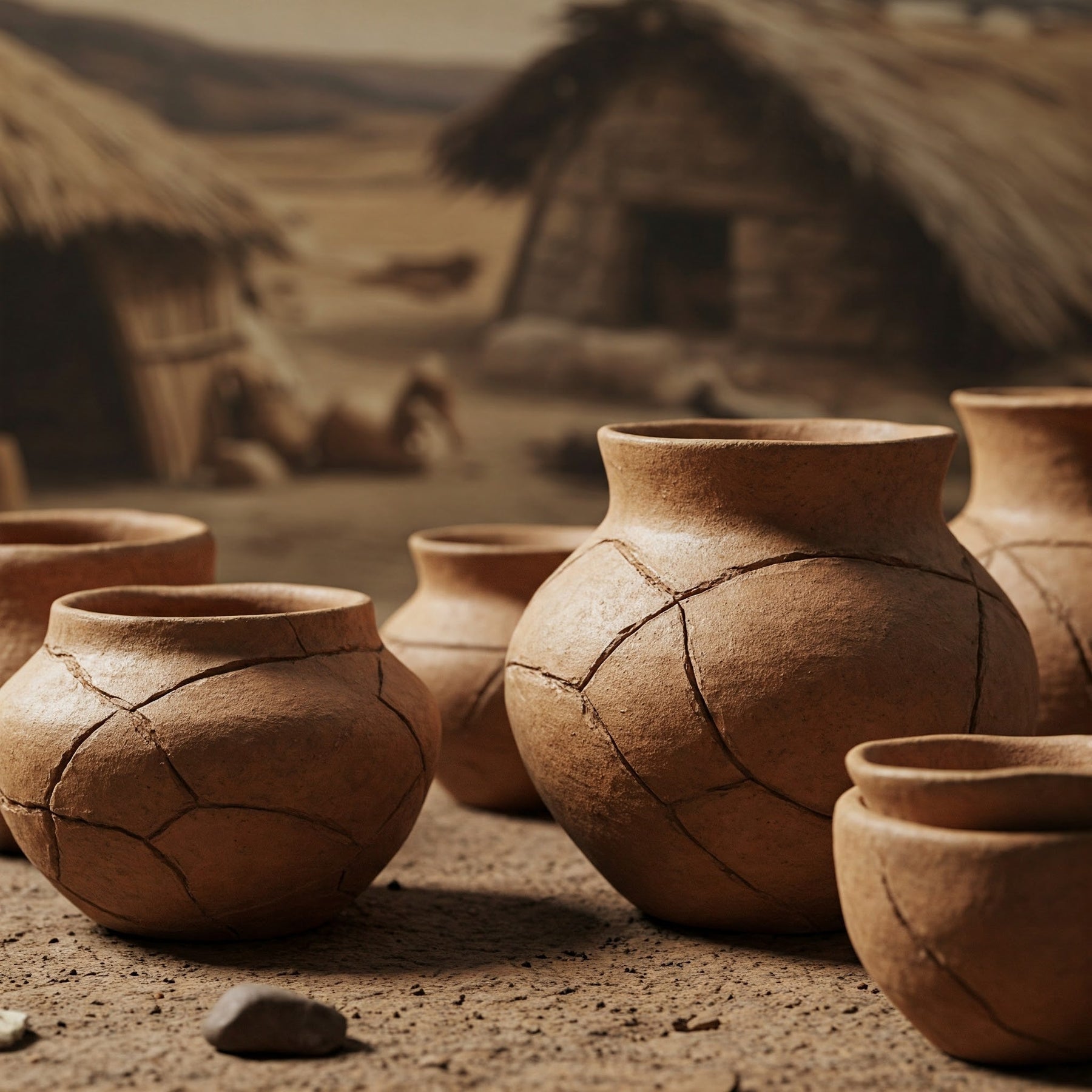
The History of the Pottery Wheel: From Ancient Clay to Modern Art
Ever wondered who got tired of lumpy, lopsided pots and decided, “There’s got to be a better way”? Enter Pottery Wheels—born in Mesopotamia over 6,000 years ago, turning clay chaos into symmetry. Dive into its history and invention, where creativity met engineering to shape civilisation—literally! Keep reading for the full story!

The Dawn of Ceramics: Early Pottery Before the Wheel
Before the invention of the wheel, crafting pottery was slow, laborious, and required immense skill. Ancient potters relied entirely on their hands, shaping clay with patience and precision. Despite its limitations, this method laid the foundation for all ceramic traditions.
Hand-Building Techniques: Coiling, Pinching, and Slab Construction
Early potters developed three main hand-building techniques:
-
Coiling: Rolling clay into long ropes, stacking them, and smoothing the surface.
-
Pinching: Using fingers to mould a lump of clay into shape.
-
Slab construction: Flattening clay into sheets and assembling it like a puzzle.
These methods produced functional pottery, but they were time-consuming and inconsistent.
The Limitations of Early Pottery Methods
Hand-built pottery lacked precision. Large vessels were tricky to create, and symmetry was almost impossible. Without a fast way to shape clay, mass production was a distant dream.
The Importance of Clay in Ancient Civilisations
Despite the challenges, clay was essential for storing food, carrying water, and cooking. As civilisations grew, so did the demand for better pottery—pushing craftsmen towards innovation.
The Genesis of the Pottery Wheel: When and Where?
The first pottery wheels appeared in Mesopotamia around 4500–3500 BCE, a period of rapid technological change. These early wheels were simple platforms spun by hand, but they marked a turning point in ceramic history.
The Earliest Evidence: Mesopotamia and the Bronze Age
Archaeologists have discovered remains of early pottery wheels at ancient Mesopotamian sites like Ur and Tell Brak. These rudimentary turntables, known as tournettes, were manually spun, allowing potters to work faster and with more precision.
The Role of Technological Advancement
As metal tools and engineering improved, so did pottery wheels. Faster, more efficient models emerged, setting the stage for the pottery boom of the ancient world.
The Transition from Slow Wheel to Fast Wheel
The Tournette: A Precursor to the Modern Wheel
The tournette was a small, hand-turned platform. While it was a step forward, potters still had to stop frequently to spin the wheel.
The Development of the Kick Wheel
By around 3000 BCE, the kick wheel was introduced. Operated by foot, it allowed continuous spinning, freeing both hands for shaping. This innovation made pottery faster, more uniform, and opened the door to more intricate designs.
The Mechanics and Evolution of the Pottery Wheel
Over time, pottery wheels evolved in material, speed, and efficiency.
Early Wheel Designs and Materials
Different civilisations experimented with various materials for their wheels, ranging from heavy stone to lightweight wood.
The Impact of Rotational Speed and Momentum
The faster a wheel spun, the more control potters had over shaping clay. Momentum allowed for smoother finishes and complex designs.
The Evolution of Wheel Construction
Stone Wheels
Heavy and durable, stone wheels provided excellent momentum but were difficult to move.
Wooden Wheels
Lighter and easier to use, wooden wheels became popular for their portability.
Modern Electric Wheels
Today’s electric wheels eliminate manual spinning, offering precise speed control.
Comparison of Pottery Wheel Types
|
Type |
Material |
Speed Control |
Ease of Use |
Common Era |
|
Tournette |
Stone/Wood |
Manual |
Low |
4500 BCE |
|
Kick Wheel |
Wood/Metal |
Foot-Powered |
Moderate |
3000 BCE |
|
Electric Wheel |
Metal |
Motor-Controlled |
High |
Modern Day |
The Profound Impact of the Pottery Wheel on Society
The pottery wheel reshaped the world—literally.
Increased Efficiency and Mass Production
With wheels, potters could produce more pieces in less time, supporting growing populations.
Standardisation and Uniformity in Pottery
Vessels became more consistent in size and shape, making them more practical for trade.
The Growth of Trade and Commerce
Pottery became a major trade commodity, spreading styles and techniques across cultures.
Artistic and Cultural Significance
Decorative Techniques Enabled by the Wheel
With more control, potters developed intricate patterns, carvings, and glazes.
The Development of New Pottery Forms
From amphorae to goblets, the wheel allowed for more diverse and sophisticated designs.
The Legacy of the Pottery Wheel: From Ancient Craft to Modern Art
Despite technological advancements, traditional pottery techniques still thrive today.
The Enduring Importance of Wheel-Thrown Pottery
Many artisans continue to use manual wheels, preserving age-old traditions.
Modern Interpretations and Innovations in Pottery
Artists experiment with digital tools, 3D printing, and hybrid techniques.
The Connection Between Ancient and Contemporary Potters
The same fundamental techniques from 6,000 years ago still influence modern ceramics.
Frequently Asked Questions (FAQ) About the Pottery Wheel
Who invented the first pottery wheel?
Mesopotamian potters in around 4500 BCE.
What materials were used for early pottery wheels?
Stone, wood, and later metal.
How did the pottery wheel change pottery making?
It sped up production, improved consistency, and allowed for more artistic detail.
Are there still potters who use traditional wheels?
Yes! Many prefer the craftsmanship of kick wheels.
How does an electric pottery wheel work?
A motor spins the wheel, allowing for hands-free control.
Conclusion: The Enduring Revolution of the Spinning Wheel
From its humble beginnings in Mesopotamia to today’s high-tech studios, the pottery wheel remains a timeless tool. It revolutionised ceramic production, shaped economies, and elevated artistry. Whether crafted by foot or motor, every spun pot carries a legacy that has stood the test of time.

